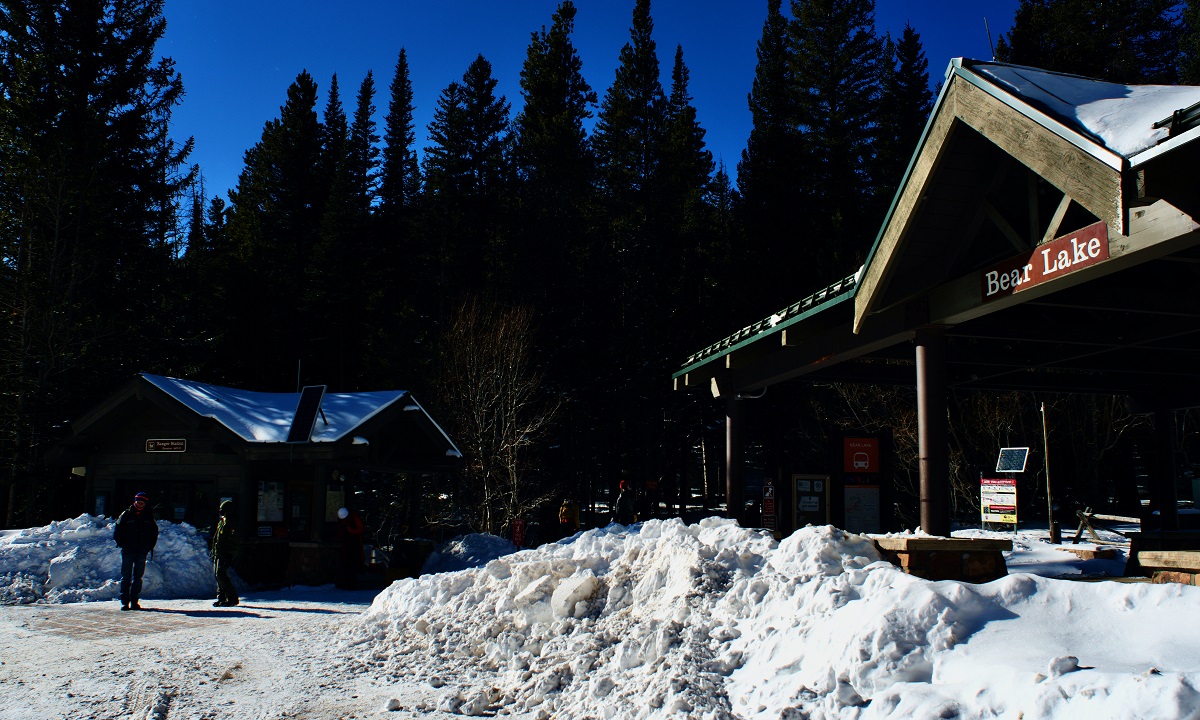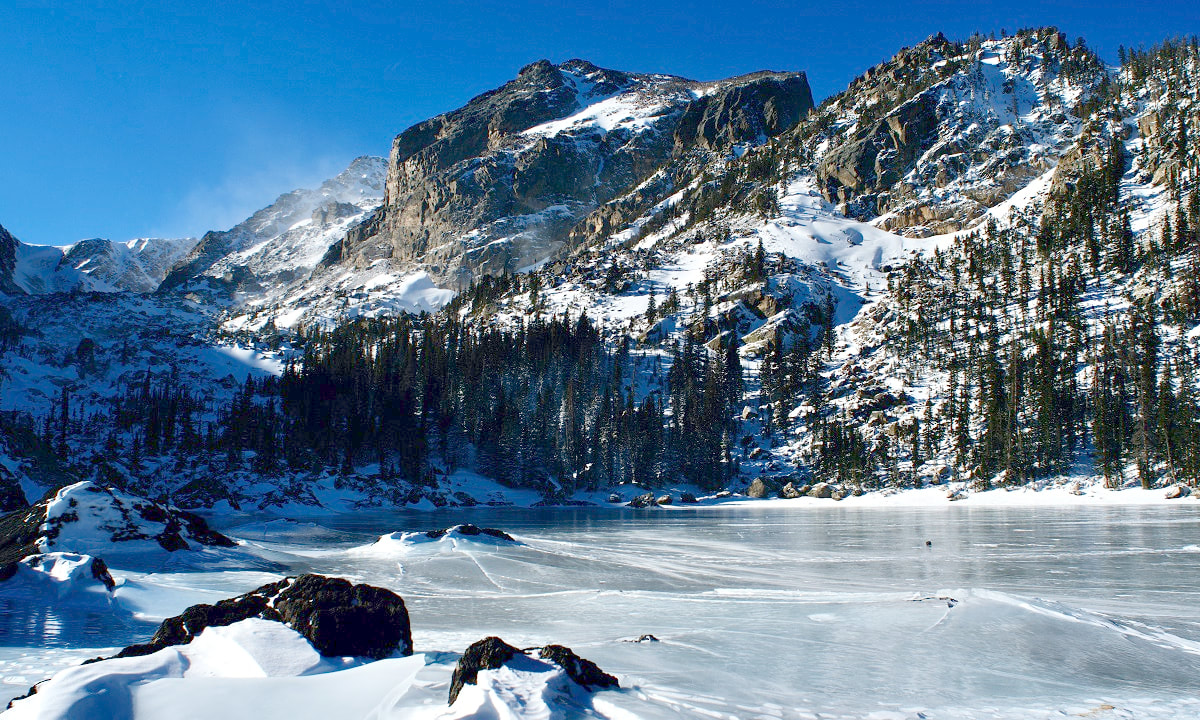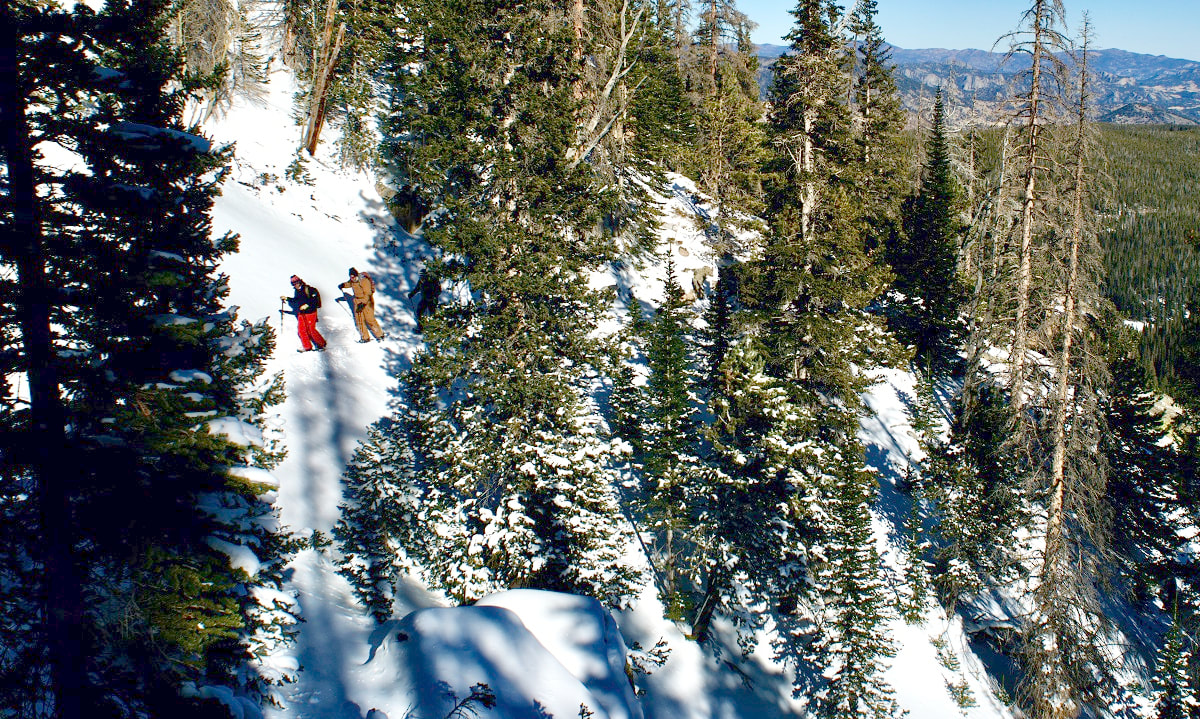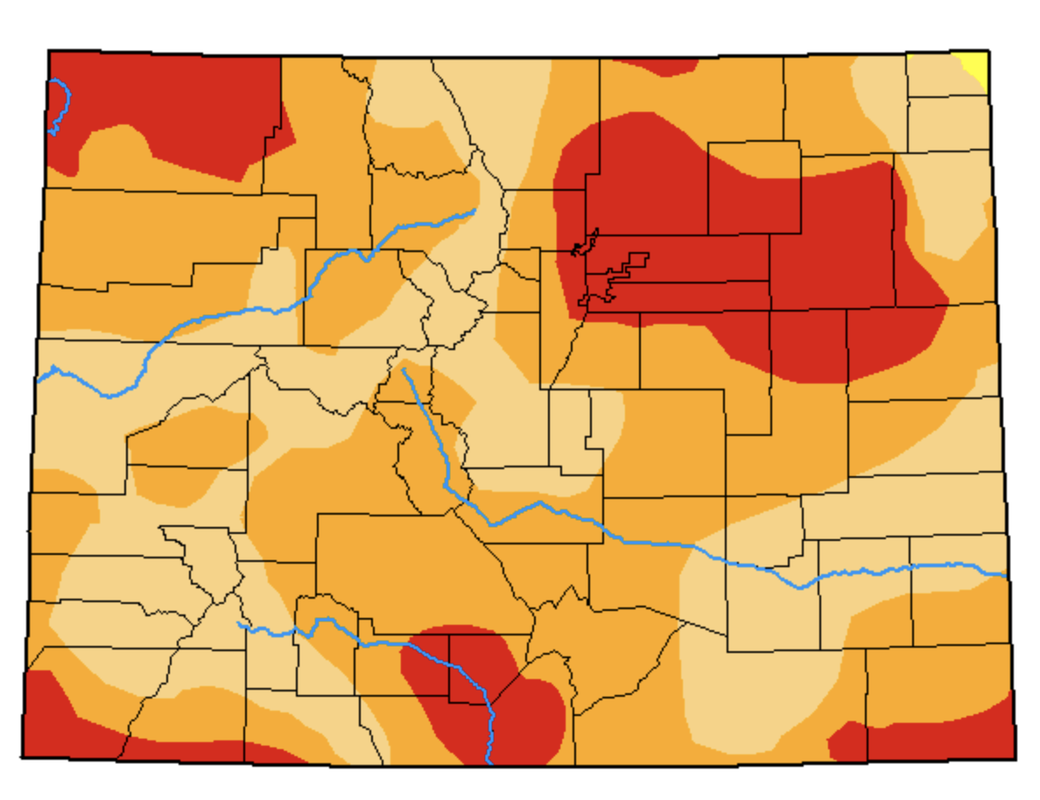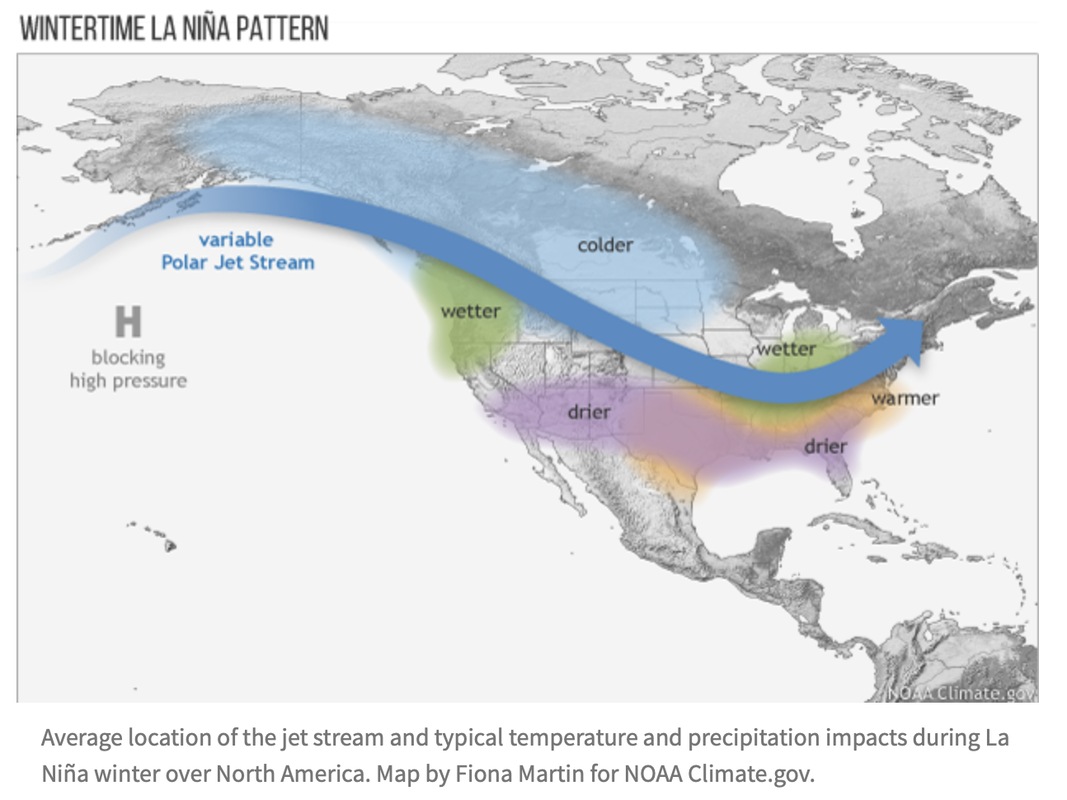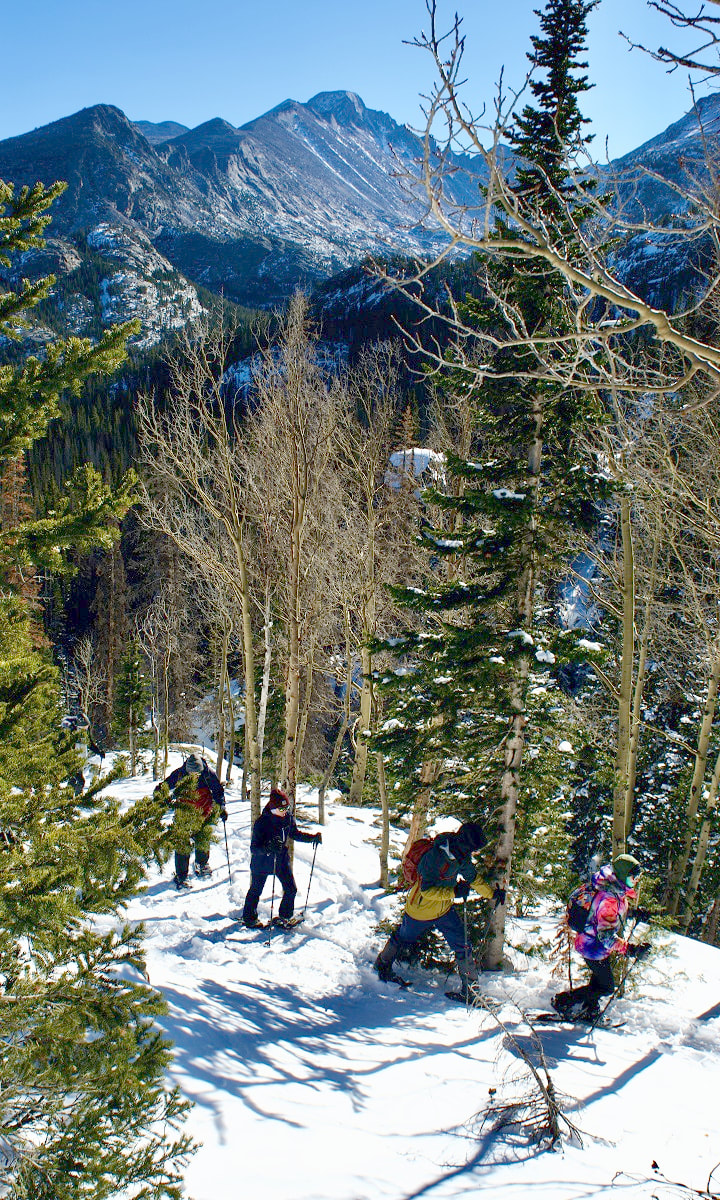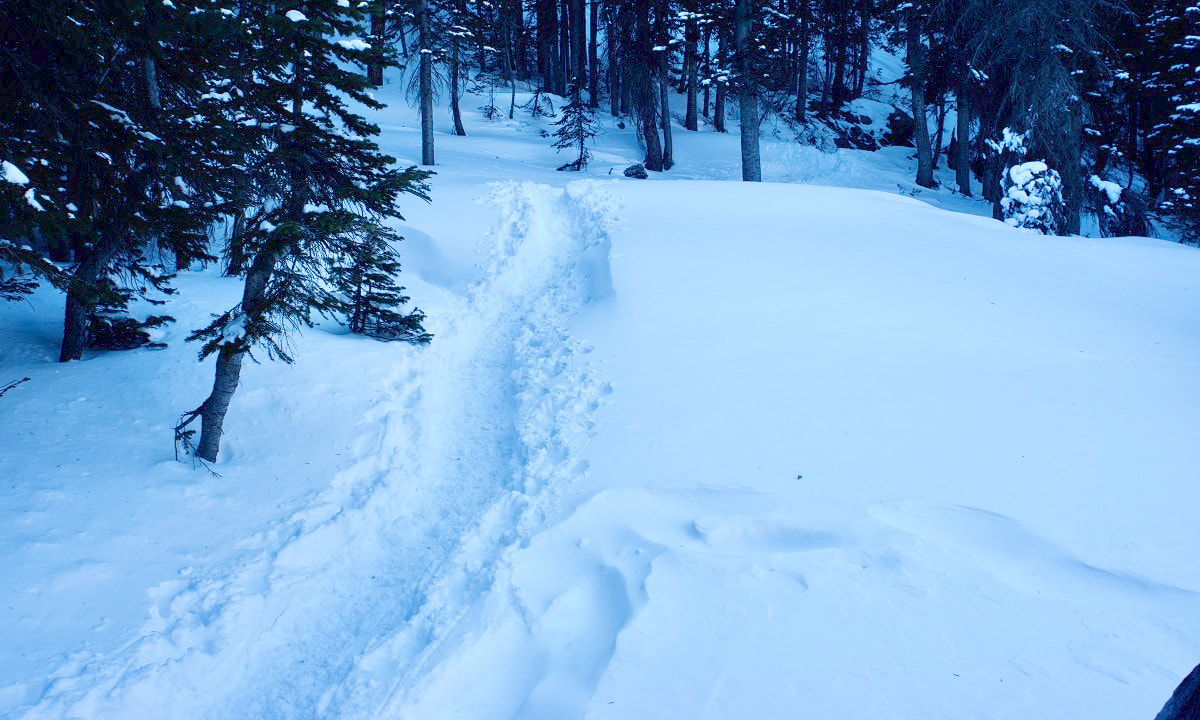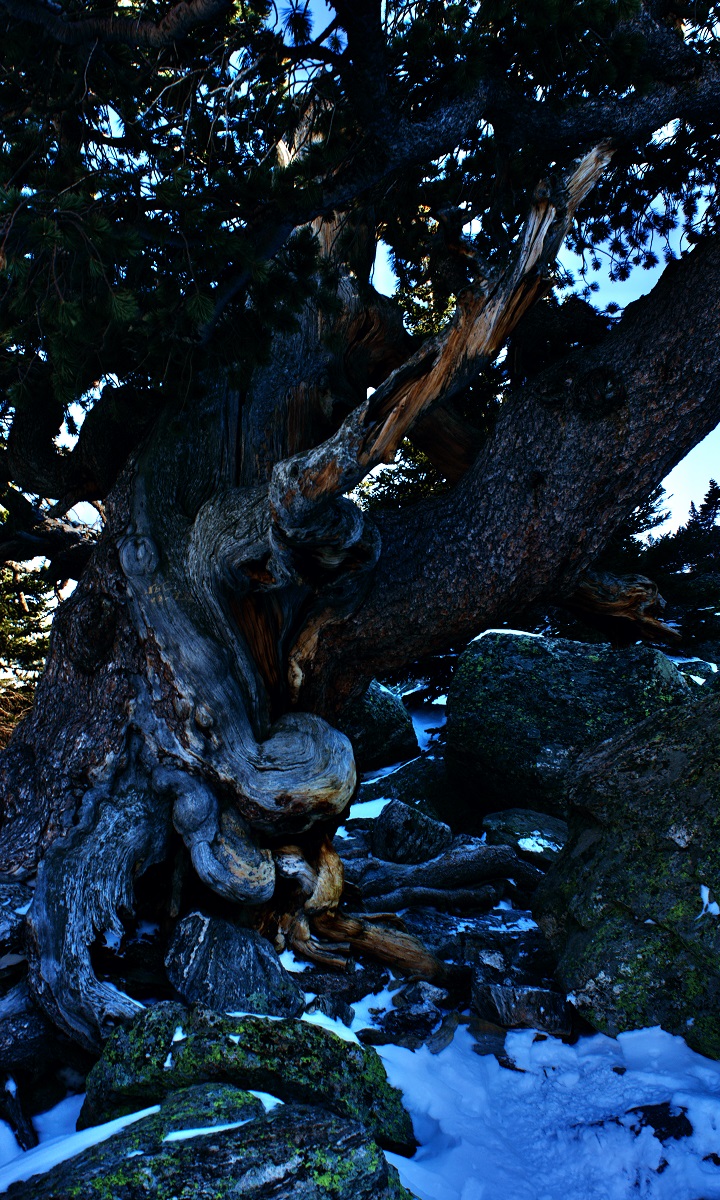|
Story, photos & video by Dave Rusk The Bear Lake trailhead is, without a doubt, the most popular trailhead in Rocky Mountain National Park. I think it's fantastic that there's a mountain lake so accessible to a great many people who otherwise might never get to see such majestic beauty. For many others, going a farther 1.1 miles to Dream Lake is challenge enough but with an unmatched mountain experience. It's always astonishing to me that this trail isn't more beat up and worn out given the thousands of hikers that trek to see the Dream each year. Tucked off from this well-visited trail is the Lake Haiyaha trail. Even though it's only 2.2 miles from the Bear Lake parking lot, the lake is often overlooked by the many Dream Lake trekkers. In fact, because the Bear Lake parking lot is so full of Bear Lake and Dream Lake hikers, this lake is often less visited than it might be. It is a lake with a pronunciation that even laughs at itself (just remember when trying to spell it, the “a” goes before the “i"). They say the name means “rock” and indeed there are boulders strewn about everywhere in Chaos Canyon that stretches above the lake. In early November, I hiked to up to Lake Haiyaha to see how the snow conditions were faring (see the video). Starting the hike at 9,475 ft., the trail rises up 745 ft. to an elevation of about 10,220 ft. While Rocky had experienced some October snow storms, most of the trail conditions at that time were icy with very little snow coverage, until I got above 10,000 ft. When I was there, the lake was mostly frozen over, but not solid enough for ice skating just yet. When I reached the lake, the wind was blowing hard down Chaos Canyon. 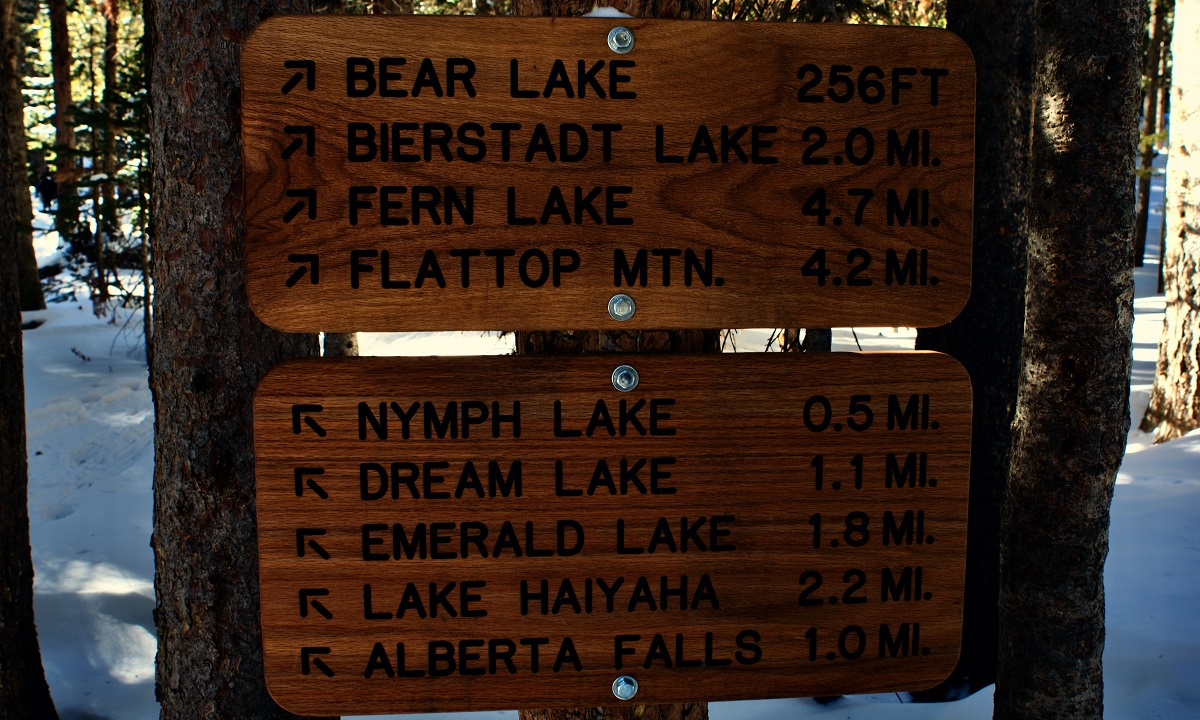 I returned to the lake again in mid-December and found the conditions had become much more winter-like with more snow and cooler temperatures. Some early December snows brought increased snow coverage down to below 9,000 ft. covering over any icy spots on the trails. While snow travel even at 10,000 ft. did not yet necessitate snowshoes, a decent snowpack was beginning to set up. The wintery conditions I found in mid-December had not been aided by our November weather pattern. In fact, according to the November Climate Summary Report from the Colorado Climate Center, this year's November was the third warmest for the state and ranked as the 11th driest on record. In short, our November was warm and dry, increasing drought conditions in our region to moderate and running the snowpack for the early season to below average. Colorado state climatologist Russ Schumacher is blaming a La Niňa ocean pattern in the Pacific that typically shifts moisture farther north. Whether any of that moisture will drop down in latitude on our mountains will largely depend on where the Jet Stream sets up. NOAA forecasters are “confident” that the La Ni~na pattern will persist through the winter. However, Schumacher did add, “It's still very early and a lot can change between now and the spring,” hedging his bets, like any good weather forecaster would. I hope change comes. But winter had set in up high and the six or so inches of snow on the Lake Haiyaha trail was getting packed in. In the summer, this trail is a pretty nice moderate hike with good views of Longs Peak and the Glacier Gorge region along the way. But in the winter, it can be a different game. While the winter trail to Dream Lake sees lots of travel and is usually well established, the number of snow travelers drops off considerably for the Lake Haiyaha trail cutoff. A good snow storm can quickly cover over the existing snow-packed trail and it could be easy for whoever is breaking the new trail at the time to get off course, leading followers astray. What seems like a relatively nice winter venture could get tricky real quickly if someone not familiar with the surrounding terrain were to accidentally drop down into the Chaos Canyon area under less than favorable weather conditions. On the day I went, the fresh snow was good and there was a decent path that stuck to the trail. Though the temperature was cool, I had to continually pull my cap off to keep my head from over heating and getting too sweaty. It can be easy to overheat when hiking in winter conditions and then become quickly chilled in the wind when stopping for a rest. There were several small groups that were making their way to the lake while I was out. One gentleman had even brought ice skates! Once I got to the lake, I found the wind was still blowing hard down canyon. 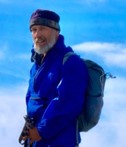 Dave Rusk has been sauntering and taking photographs through Rocky Mountain National Park for decades. He is the author publisher of Rocky Mountain Day Hikes, a book of 24 hikes in Rocky, and the website of the same name. He is the publisher of HIKE ROCKY Magazine and an important content contributor to all of these endeavors.
0 Comments
Leave a Reply. |
Categories
All
|
© Copyright 2025 Barefoot Publications, All Rights Reserved

